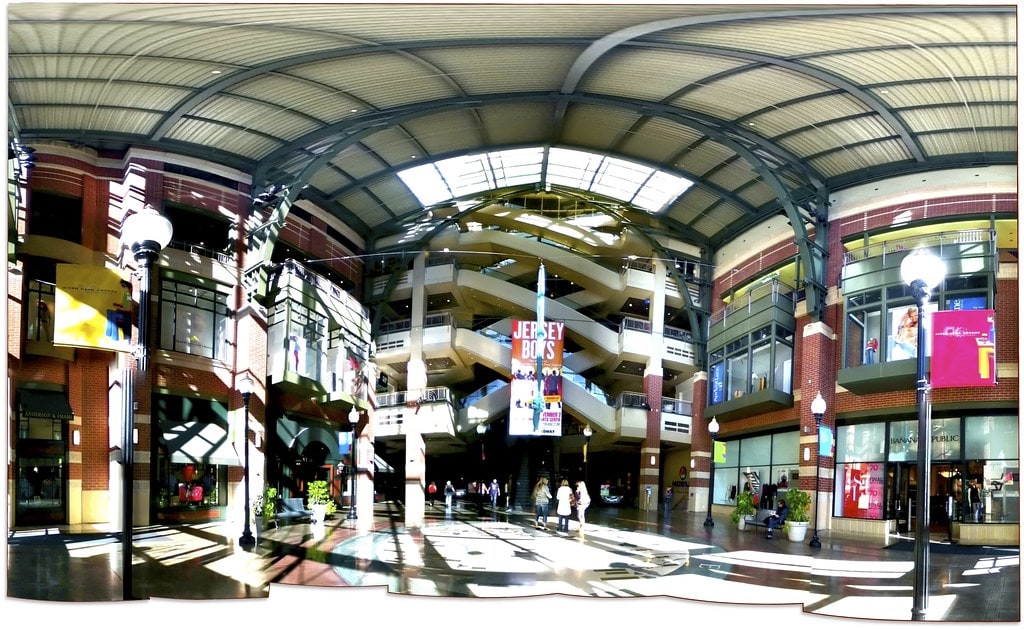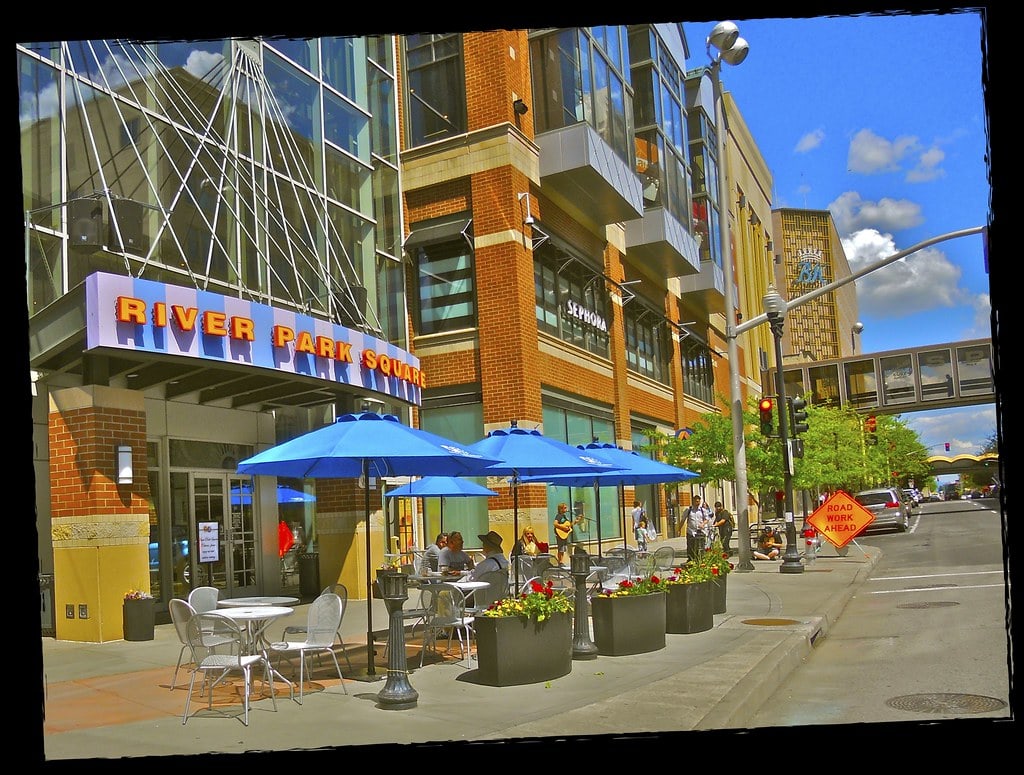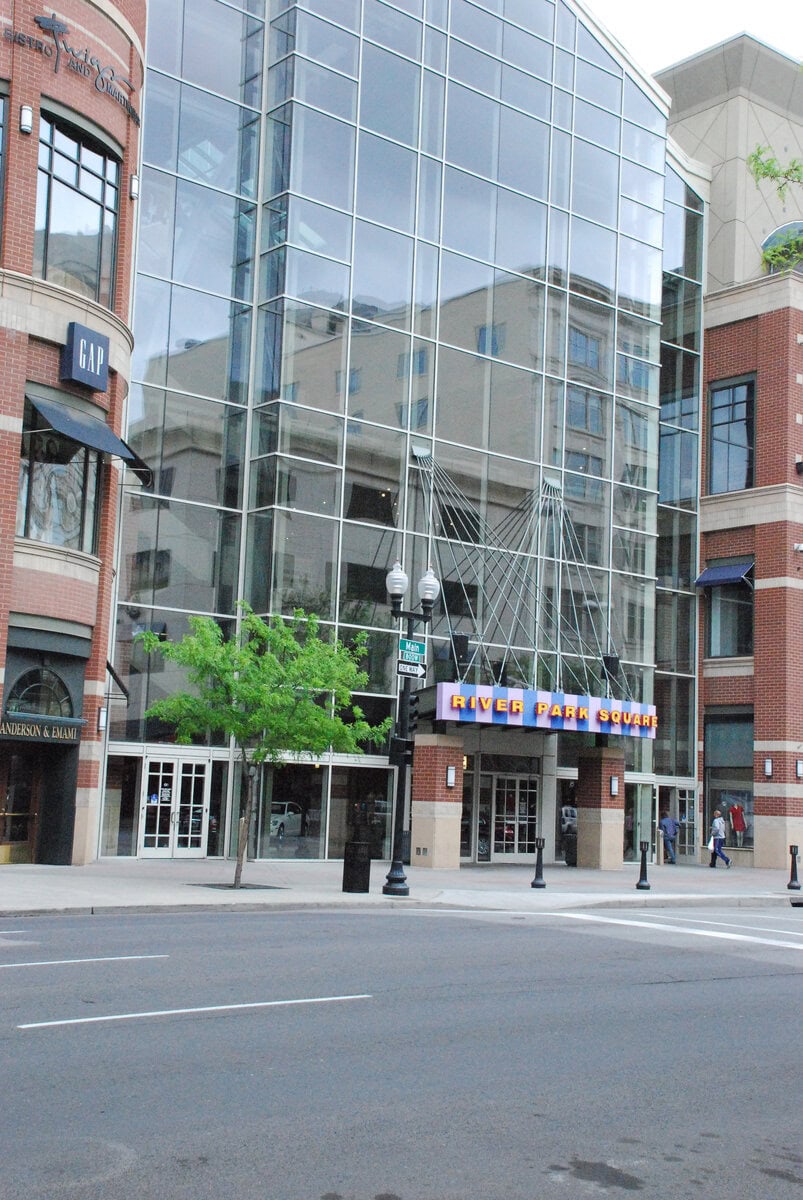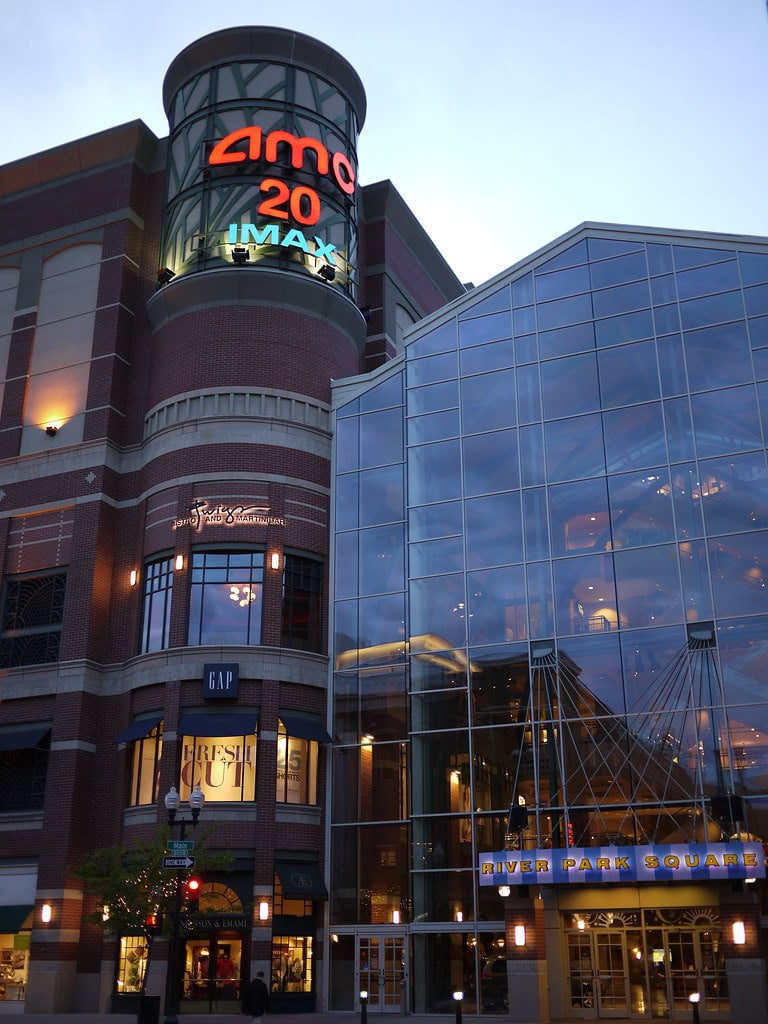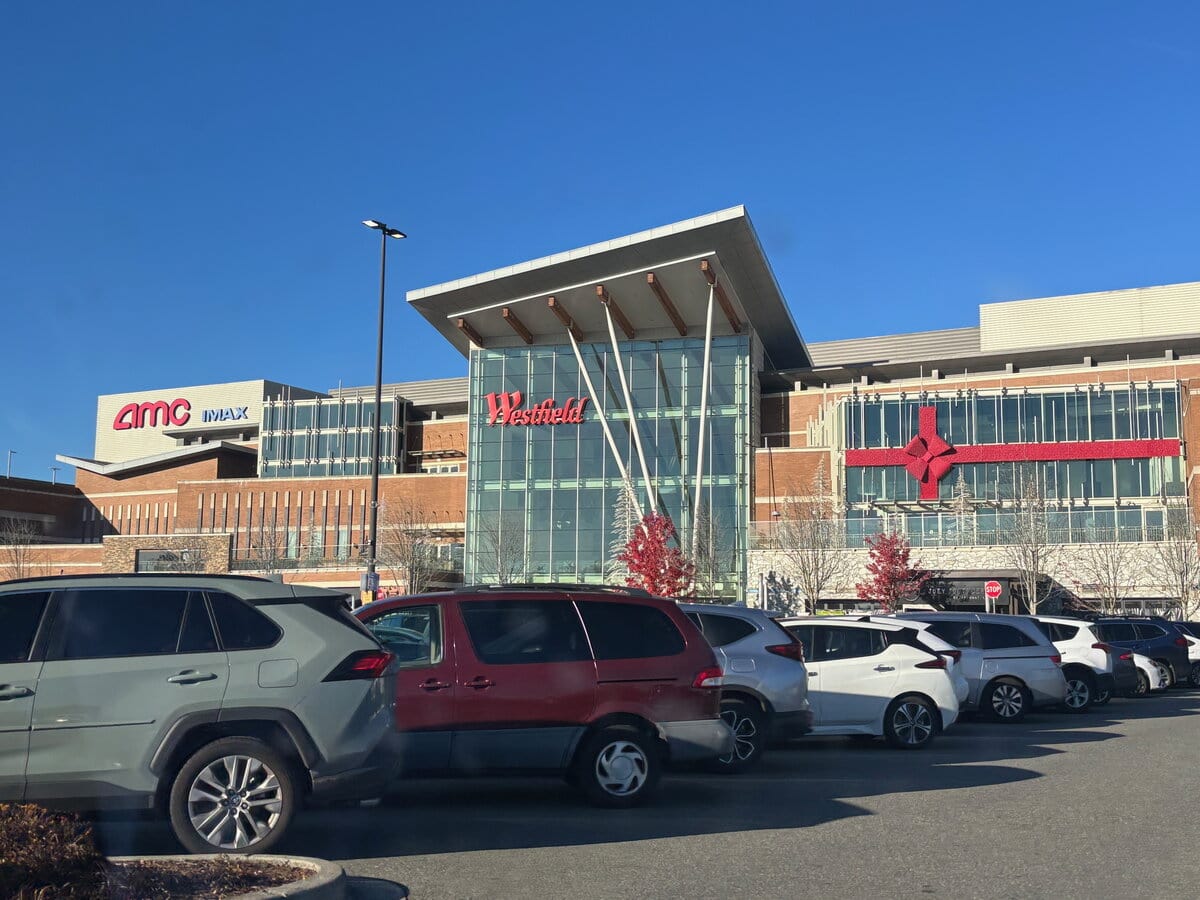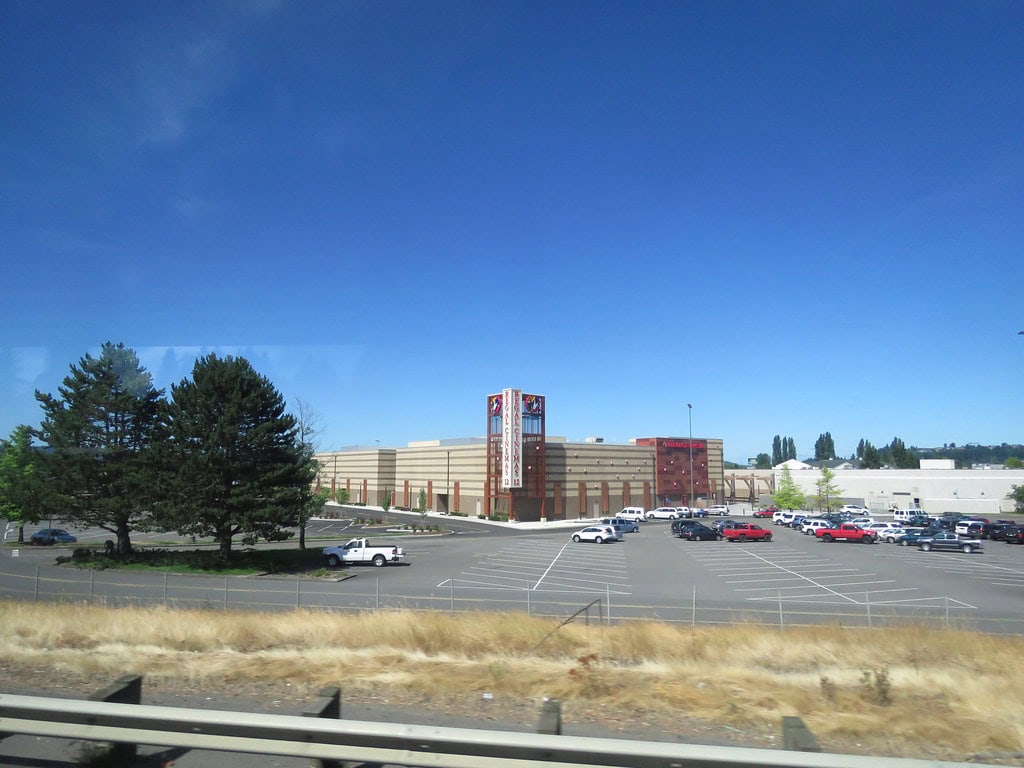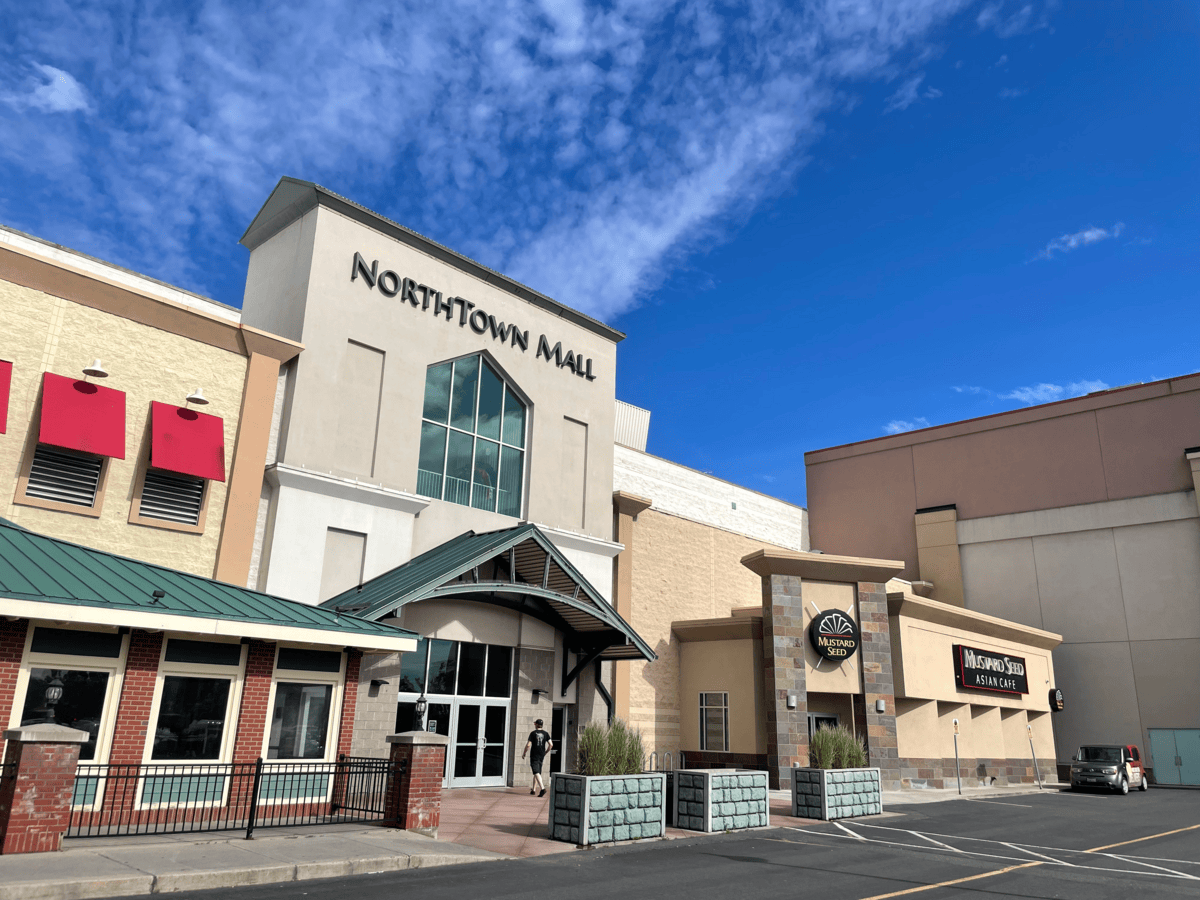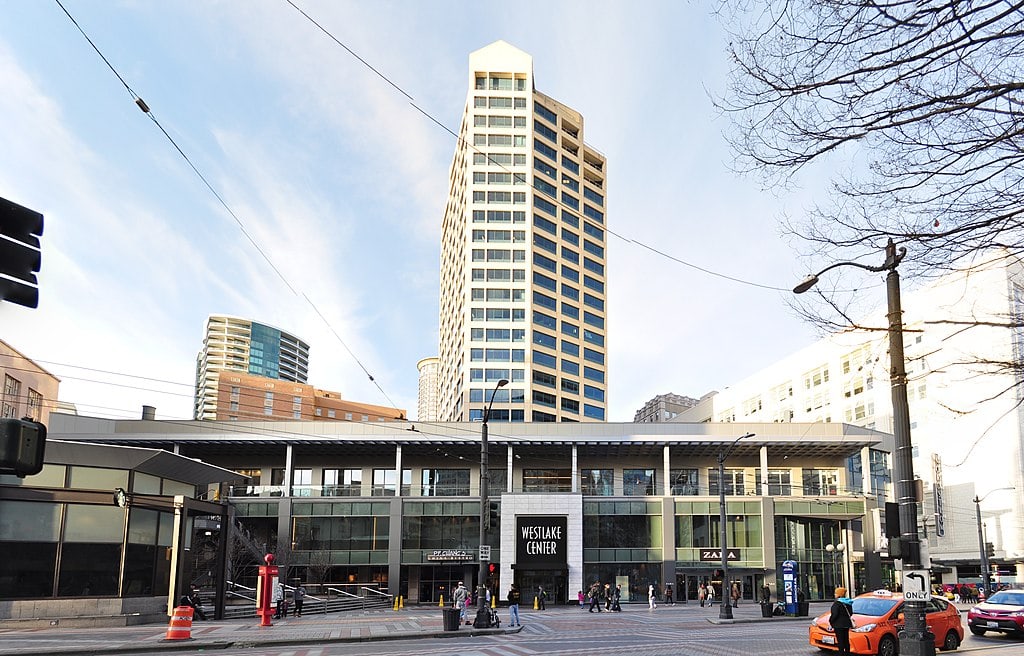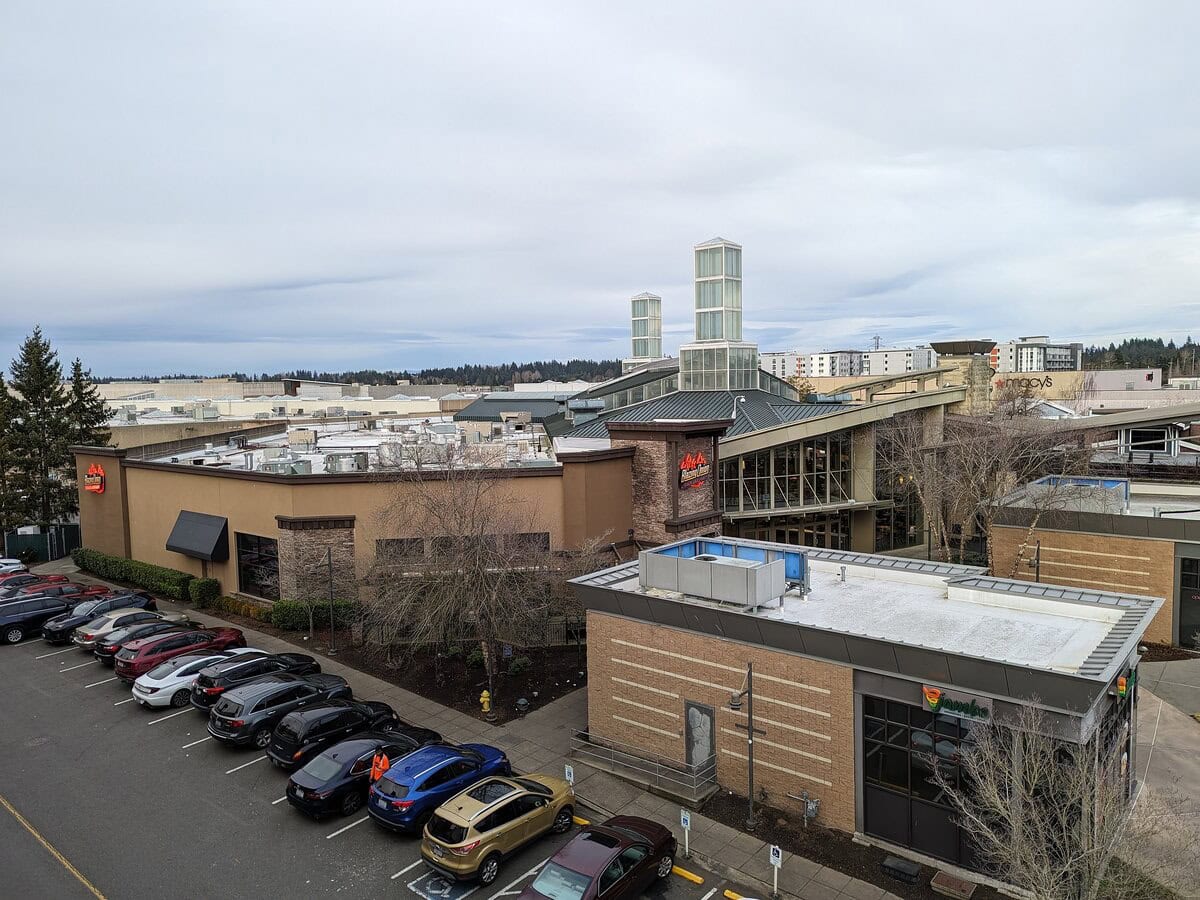River Park Square Debuts for Expo '74
River Park Square opened May 1, 1974, just days before Spokane's Expo '74 brought international crowds into the downtown corridor.
The 800,000-square-foot mall stood at 808 West Main and featured skywalks, multi-level retail, and a city-ready, enclosed design.
Anchored by Nordstrom and wrapped in new concrete and steel, it launched into a moment of urban renewal, civic pride, and high expectations.
Governor Daniel J. Evans showed up for the ribbon-cutting. So did executives from Nordstrom, which had been expanding across the Pacific Northwest.
This was their new Spokane home, positioned in view of Riverfront Park and the city's newly emerging transit patterns.
The first design leaned on modernist materials and built-in movement. The mall shaped how people moved between retail spaces downtown.
That early tie to Expo '74 still lingers in Spokane's memory.
For those looking for things to do in Spokane, Washington, the building still marks a place where the city tried to meet the world on schedule, and did.
Square Footage, Tenant Losses, and Shifting Foot Traffic - 1978–1994
By 1978, River Park Square added 55,000 square feet to its footprint, building out a full second level and installing two skywalks, one to JCPenney and one to Nordstrom.
Retail expanded again in 1984 when another 20,000 square feet came online alongside a new skywalk to The Bon Marché.
The mall stayed busy on weekends, but cracks were already forming.
Pharmacy turnover started early. The downtown drugstore space had a long history - PayLess, then Osco, then Thrifty Drug by late 1987.
In April 1994, it closed again under PayLess, this time for good.
JCPenney shut its doors in 1991, moving north to NorthTown Mall. That left a gap no skywalk could fix.
Burlington Coat Factory filled the space in 1994, but wouldn't stay past 2001.
Frederick & Nelson, which took over The Crescent in 1988, folded in 1992 and walked away from the downtown core altogether.
Empty display windows and closed escalators began to tell a different story. People still parked downtown, but fewer carried shopping bags.
Lease Renewals, Demolition Crews, and a $110 Million Bet - 1995–1999 Redevelopment
In 1995, the Spokane City Council backed a federal loan proposal for $23.8 million.
The goal was simple: build a bigger, more modern Nordstrom downtown and draw shoppers back.
River Park Square had lost too many anchors. It needed a hook.
That came in February 1998, when Nordstrom signed a 20-year lease for a new space in the heart of the site. Construction kicked off in April.
The old Nordstrom building didn't last long; it was torn down and cleared for new retail.
Crews moved in fast. What followed was four years of planning, demolition, and reconfiguration.
When the center reopened on August 20, 1999, the total bill had hit $110 million.
Roughly half came from public sources, half from Cowles Company and other private partners.
The remodel spanned five floors, stretched across two city blocks, and created 420,000 square feet of retail-ready space.
But the price tag brought heat. The new garage, funded with public dollars, became a legal and political flashpoint.
Lawsuits followed, but around 2,000 people still turned up for opening day. New brands moved in. Foot traffic picked up.
For downtown Spokane, it marked the start of a different kind of mall era: glass atriums, upscale lighting, and anchors built from the ground up rather than left behind.
Real Estate Reboots and Mixed-Use Moves - 2010s Reinvestments
By 2015, River Park Square had started flipping parcels and remaking corners.
The Saad building at Main and Wall came down that year, replaced by a 10,000 square foot Urban Outfitters.
That same year, the mall added a second-level dining extension overlooking the Main Street atrium, nicknamed "The Landing."
The changes weren't just cosmetic. Across Wall Street, the former Macy's department store sat shuttered until Cowles redeveloped it in 2016.
The upper floors turned into apartments. The first floor became retail space.
The building took on a new name: "The M." A Nike Factory Store opened there soon after, filling 12,000 square feet.
Retail tenants shifted. Flatstick Pub joined in 2019, tapping into the bar-and-games concept. The AMC theater stayed.
Nordstrom remained. But the full mix started looking more like an urban center than a traditional mall.
Storefronts leaned toward fashion, leisure, and lifestyle. Apple kept drawing tech traffic.
The North Face and Anthropologie added outdoor and upscale touches.
These weren't just updates - they were repositionings.
River Park Square kept its escalators and core layout but folded in new foot traffic sources, changed how its corners worked, and made better use of its proximity to other draws.
The real estate play wasn't about rebuilding; it was about reworking what was already there.
National Tenants, Brand Expansion, and Retail Adaptation - 2020s Growth
By 2023, River Park Square leaned deeper into national retail. On November 10, LEGO opened its first eastern Washington location inside the center.
The store measured 3,003 square feet and fronted Main Avenue. People lined up outside before the doors even opened.
Inside, the layout followed a standard concept: high walls, colorful bins, and shelves lined with exclusive sets.
Apple remained one of the mall's strongest anchors, still drawing traffic to its glass-box storefront on the first floor.
Sephora, Banana Republic, Anthropologie, Lush, and The North Face filled in around it.
None of them were new to Spokane, but together they created a lineup closer to a lifestyle center than a traditional department store mix.
Nike kept its factory store active inside The M. AMC Theatres, still operating from its longtime location, gave River Park Square an edge many suburban malls lacked, a built-in entertainment draw that kept people coming into the building past 7 p.m.
What stood out in this era was the mix. Legacy brands sat next to mall-specific expansions.
Leasing agents pointed to the mall's location, parking, and the steady flow of office and convention traffic.
Downtown Spokane still gave them reach.
Culinary Concepts, Local Leasing, and Mixed Recovery - 2024–2025
In September 2024, a local clothing shop called 4am Spokane moved into River Park Square from its old spot off Washington Street.
Its new space opened near the second-floor escalators.
The shop focused on hard-to-find footwear and secondhand streetwear, with price tags ranging from $20 to several hundred.
By early 2025, Lululemon filed plans to relocate to River Park Square.
The documents called for a $900,000 interior overhaul, with BKA Architects attached.
The opening date hasn't been confirmed, but the filings suggest a larger space in a high-traffic area.
Spiceology, a Spokane-based spice company, opened a test kitchen in March 2025.
It sat near Panda Express on the third-floor food court, part kitchen, part content studio.
It gave the company a spot for recipe testing, filming, and hospitality training.
The walls stayed mostly glass. Passersby could see staff prepping dishes under ring lights.
Then, in May 2025, a Ford Mustang slammed into the mall's Post Street entrance.
Photos showed the front end buried in glass. No one inside was seriously hurt.
The damage was cleaned up by week's end, and stores along that stretch reopened.
River Park Square kept events on the calendar. In August and September 2025, it is scheduled to host Back to School!
event, Kids Jr. Fire Academy, Mobius Mobile Planetarium Show, and WSECU Fall Fest.
The leasing page stayed live. Store lights came on by 10 a.m. most days.



